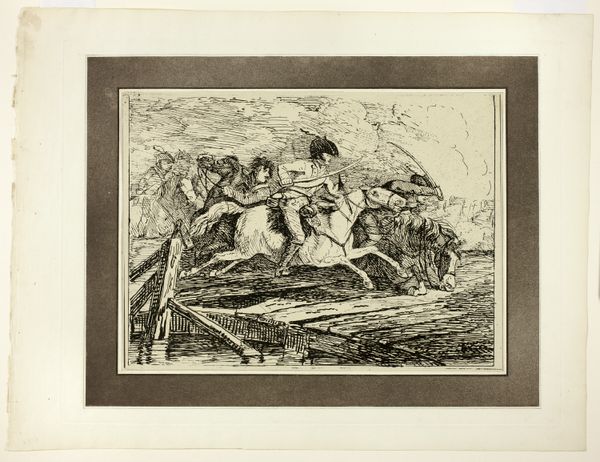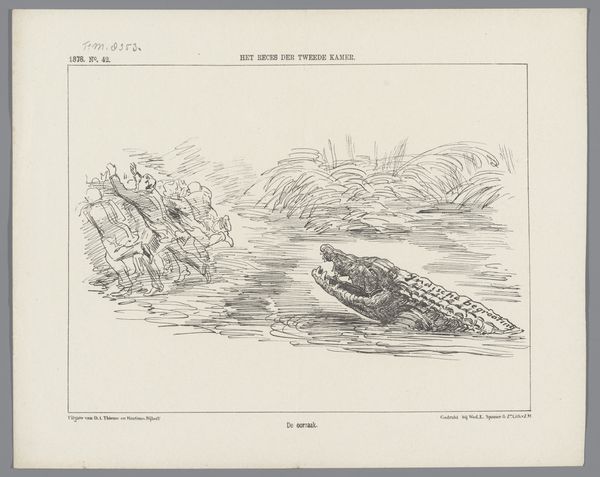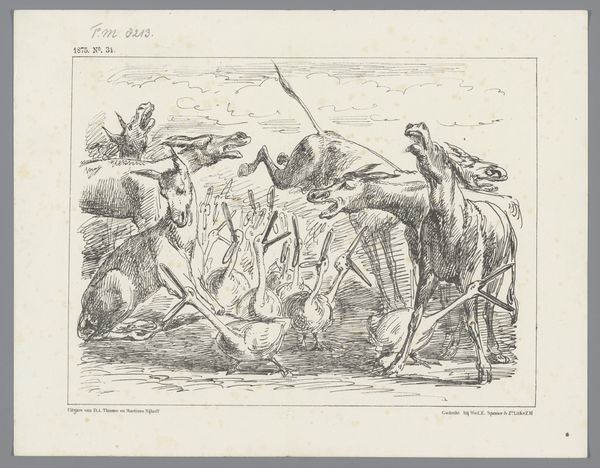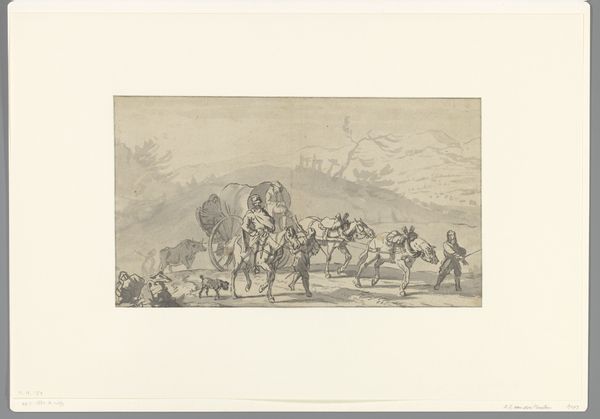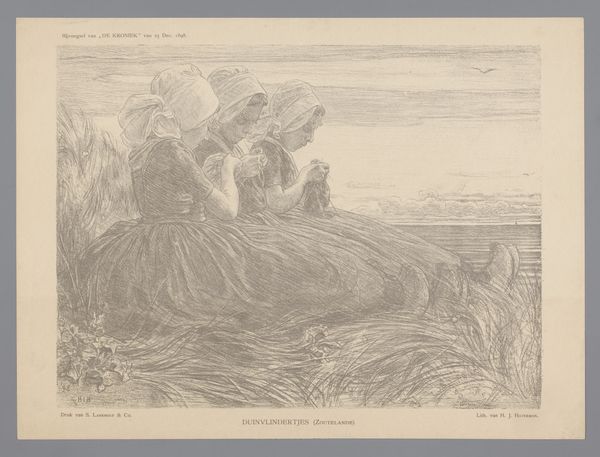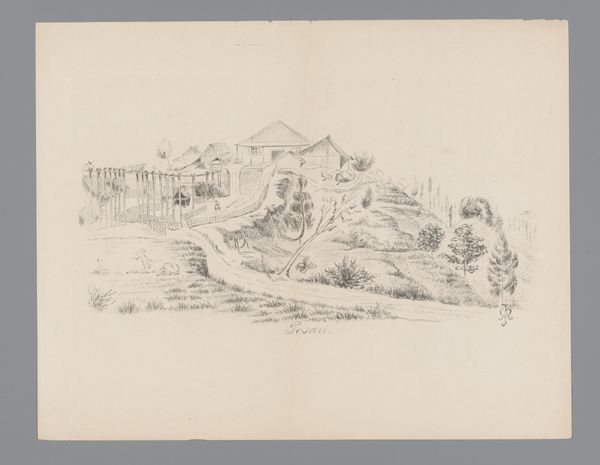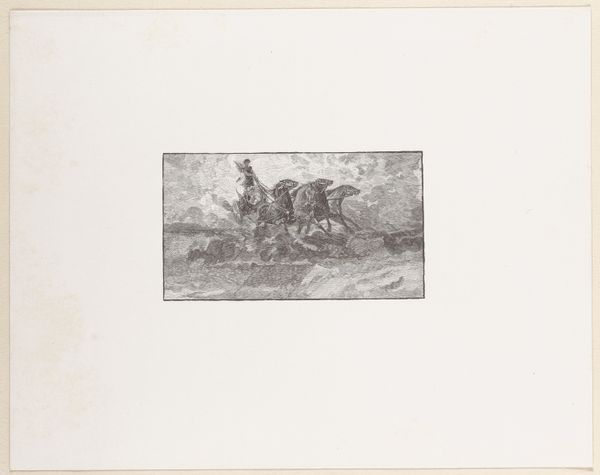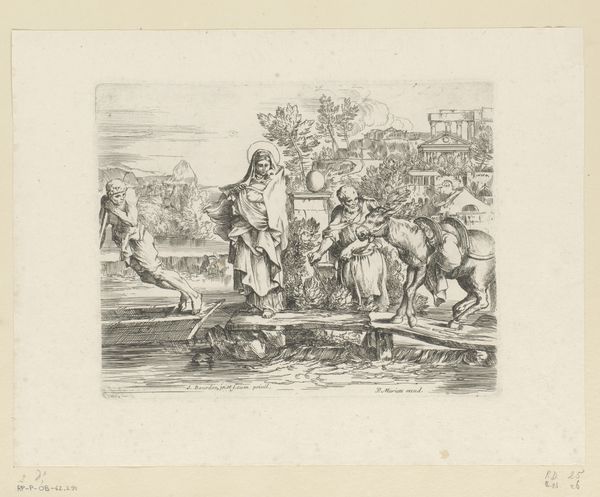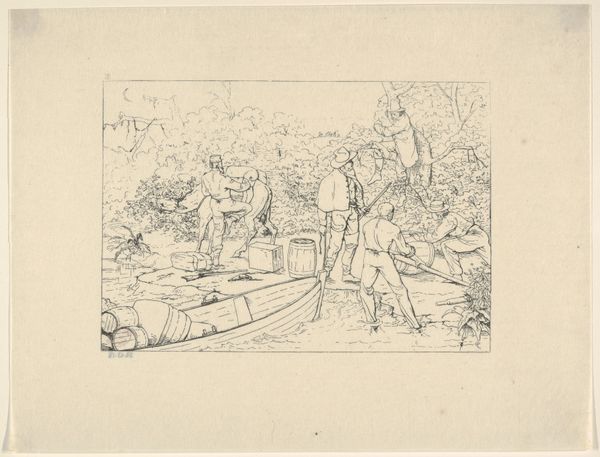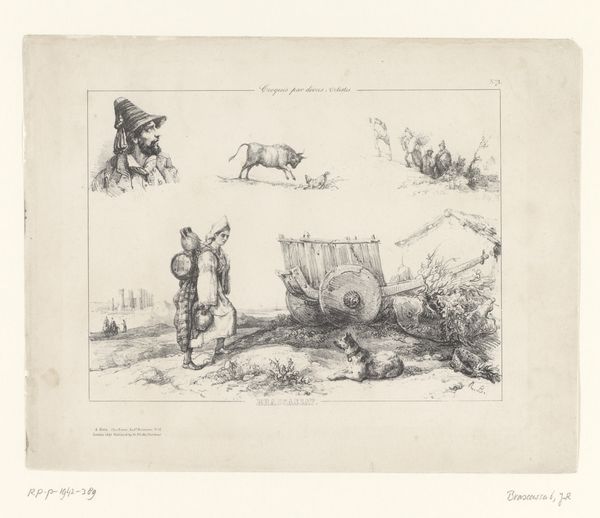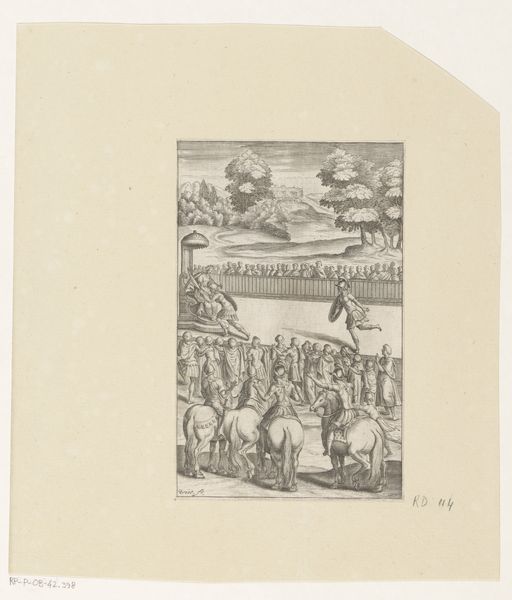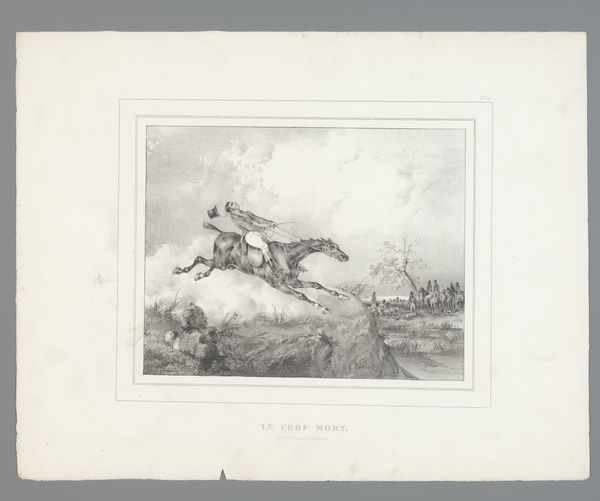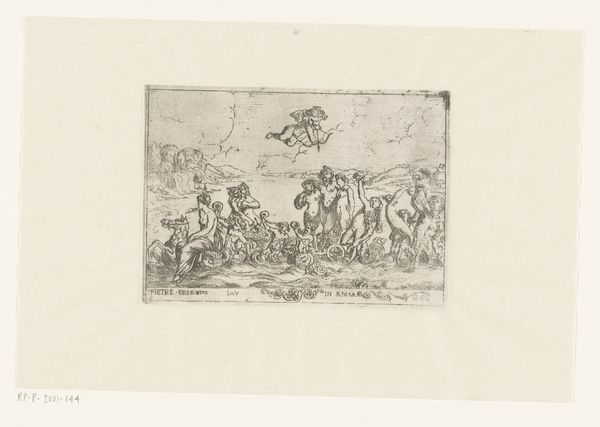
drawing, ink, pen
#
drawing
#
dutch-golden-age
#
caricature
#
ink
#
pen
#
genre-painting
Dimensions: height 215 mm, width 275 mm
Copyright: Rijks Museum: Open Domain
Curator: The artwork before us, "Spotprent" from 1877 by Johan Michaël Schmidt Crans, depicts a lively scene rendered with pen and ink. What's your initial read? Editor: Well, the frantic energy jumps out. It's a flurry of horses and figures in motion, bordering on chaotic. Are they racing into a ditch? The texture created by the pen strokes definitely contributes to this sense of unease. Curator: Indeed. This drawing satirizes a specific political context within the Dutch Golden Age. Schmidt Crans, known for his caricatures, cleverly uses a genre scene to critique something larger. The figures appear to be engaged in a chaotic horse race, perhaps symbolic of competing political factions or policies. Editor: I'm drawn to the symbols embedded within. What's intriguing is that although a "genre-painting", there is the definite element of caricature and, by extension, commentary on society, made more poignant in its setting in the Dutch Golden Age. The image's potency comes, I suspect, from juxtaposing what a caricature sets out to do, with all the signifiers of genre-painting, imbuing the piece with an even more enduring symbolic value. Curator: Precisely. Understanding that history is crucial; these weren't random figures. Schmidt Crans purposefully placed them in this ridiculous situation to lampoon their decisions. This use of visual metaphors, in my mind, creates accessibility of its themes, enabling viewers to decipher the encoded political commentary. The question arises about the nature of political commentary; why lampoon it in this way, why not a different technique or method? Editor: The sinking figure to the lower left seems particularly significant; are they meant to represent a defeated policy? Or a symbol that has failed a group within the context? What did it stand for and why were these representations chosen for that effect? This feels less immediate and more like cultural memory, which deepens our insight into a crucial historical period. Curator: It underscores the interconnectedness of political discourse, identity, and representation, wouldn't you say? By situating these caricatured politicians within such a comical scene, Schmidt Crans cleverly implicates the social values. It makes us think about how social change occurs, then and now. Editor: It gives me a window into a particular social sensibility through familiar forms. Ultimately it comes down to interpretation; what do we believe the creator was trying to achieve, given the context, visual cues and our own knowledge, to reach the ultimate 'reading' of the artwork.
Comments
No comments
Be the first to comment and join the conversation on the ultimate creative platform.
